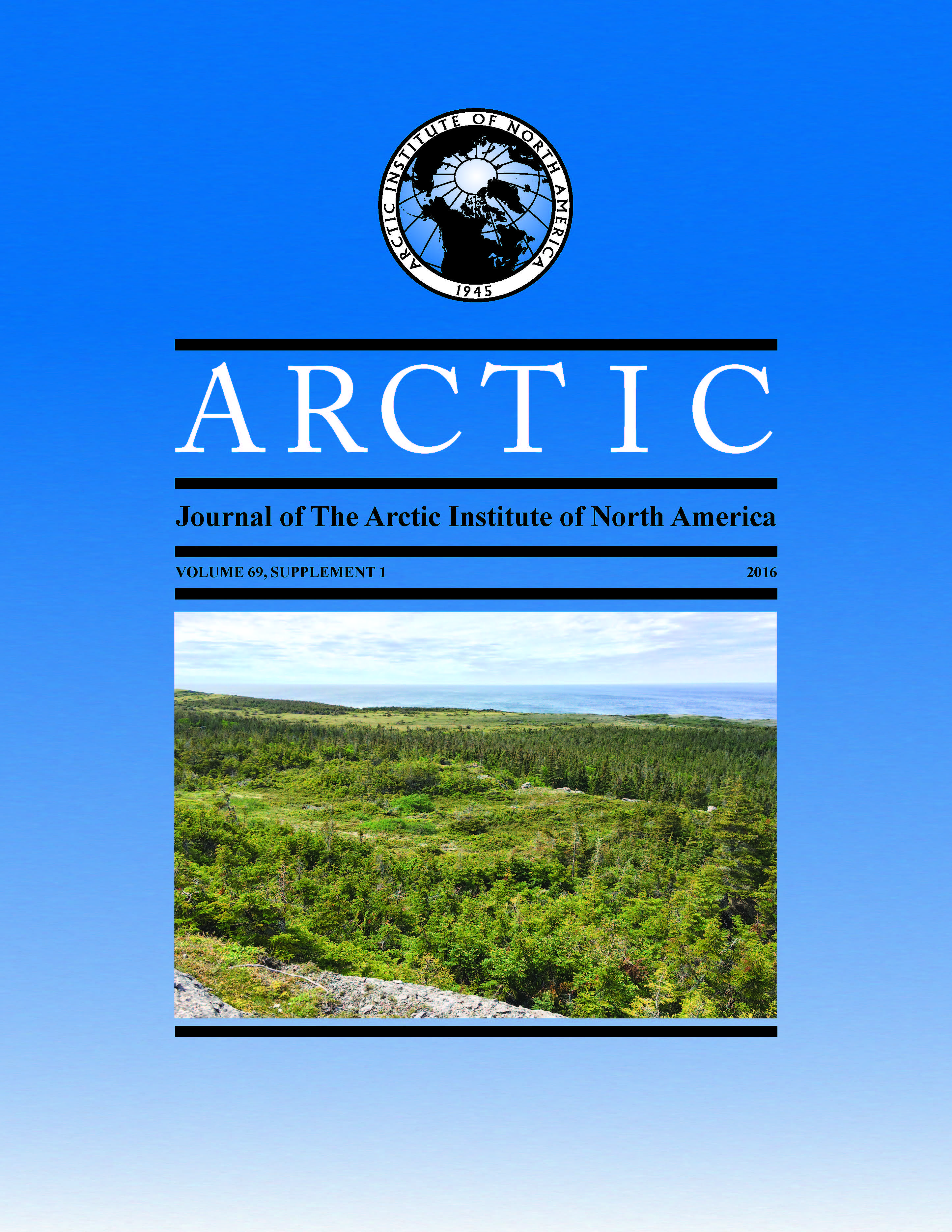Living at a High Arctic Polynya: Inughuit Settlement and Subsistence around the North Water during the Thule Station Period, 1910–53
DOI :
https://doi.org/10.14430/arctic4573Mots-clés :
Inughuit historique, polynie des eaux du Nord, modèles de subsistance et d’établissement, territoires de chasse, cycle de chasse annuel, chemins empruntés par les traîneaux, traiteRésumé
Les modèles d’établissement et de subsistance des Inughuits de l’Avanersuaq (région de Thulé) font l’objet de descriptions et d’analyses pour les années allant de 1910 à 1953, à l’époque où la station de traite de Knud Rasmussen à Dundas était active. La subsistance des Inughuits reposait sur les riches ressources biotiques de la polynie des eaux du Nord, entre l’île d’Ellesmere et le Groenland, mais l’analyse montre que la traite, principalement celle de fourrure de renard à la station de Thulé, a également joué un grand rôle dans la formation du modèle d’établissement pendant cette période. Durant la période de la station de Thulé, le nombre d’établissements hivernaux nommés se chiffrait à environ 40 sites. Cependant, seulement 10 à 15 d’entre eux étaient fonctionnels en même temps. L’établissement des Inughuits près de la station, soit Uummannaq, a tôt fait de devenir le plus grand site de la région. Les sources nous permettent de suivre les changements de résidence de certaines familles de chasseurs sur quatre décennies. En déplaçant leurs sites hivernaux aux deux ou trois ans, les familles acquéraient des connaissances directes de la topographie et de la variation saisonnière des territoires de chasse de l’ensemble du district de Thulé pendant leurs années d’activité. De la même manière, ils entraient en contact avec divers réseaux familiaux au fil des ans. Le fait de retracer les chemins empruntés par les traîneaux qui reliaient les sites sur de grandes distances révèle à quel point la proximité des chemins principaux et des chemins d’évasion sur la calotte glaciaire jouait un grand rôle dans l’emplacement du site. La technologie des traîneaux à chiens et, par conséquent, la capacité à transporter des humains, de l’outillage et des vivres conservées, a battu son plein pendant la période de la station de Thulé, lorsque la richesse découlait de la traite et de l’accès aux matériaux bruts. Le mappage des principaux territoires de chasse sur la glace de mer et la modélisation de l’étendue annuelle des possibilités des chasseurs d’avoir accès à différents types de gibier — principalement le morse, le phoque annelé, le narval et les oiseaux marins (en plus d’un peu de caribou) — a permis de démontrer que le phoque annelé constituait l’essentiel des moyens d’existence de l’économie de subsistance. Cependant, les ressources en vrac, acquises par le biais de chasses printanières intensives du morse dans quelques points chauds, de même que la consommation et le partage soigneusement planifiés de la viande et du petit lard emmagasinés, étaient essentiels à la vie dans la polynie des eaux du Nord. L’établissement temporaire aux stations de traite de la région, environ deux hivers à la fois, faisait également partie de la stratégie de gestion des risques des Inughuits.


